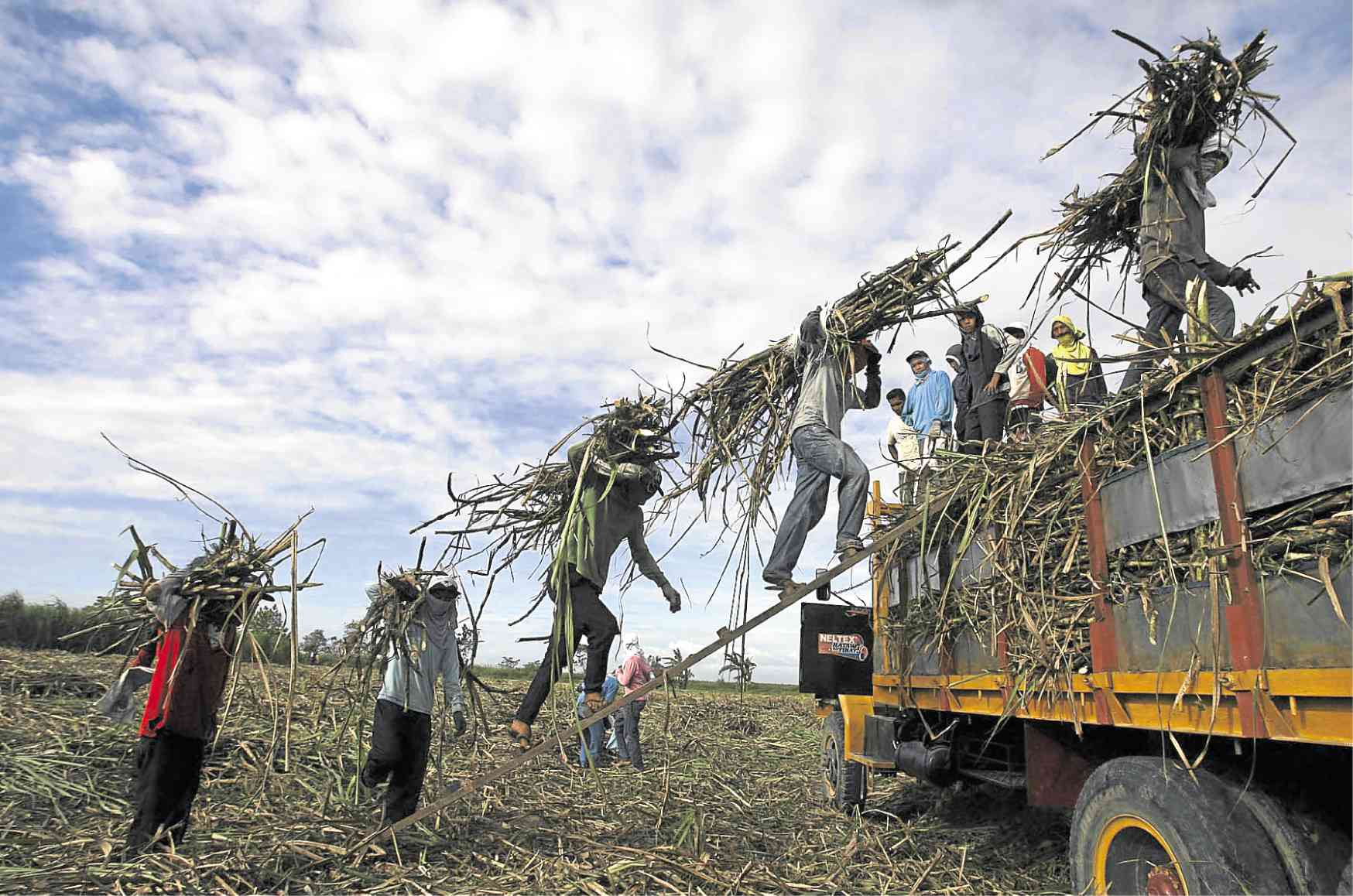CARP ‘aberration’: Last of Luisita land given to farmers

FROM WORKERS TO OWNERS Farmworkers and tillers at Hacienda Luisita are now owners of agricultural land in the 6,452-hectare sugar estate formerly controlled by the Cojuangco family in Tarlac province, thanks to the government’s agrarian reform program. —LYN RILLON
MANILA, Philippines — The last plots of land in Hacienda Luisita were given away to farmers on Tuesday, more than 30 years after the sugar plantation owned by the Cojuangco family was supposed to have been broken up and distributed to peasants after one of its own, President Corazon Aquino, placed all agricultural land in the country under agrarian reform.
On the 31st anniversary of the Comprehensive Agrarian Reform Program (CARP) launched by Aquino as the centerpiece program of her administration, President Rodrigo Duterte bewailed the exclusion of the hacienda from land reform as “the greatest anomaly” in the government’s pursuit of social justice.
“I’d like to state very clearly that I have nothing against the Aquino family, the two Presidents and the family. I would like to put it [on] record that for the first two Aquino presidents, we supported them, our family in Davao,” the President said in a speech during a ceremony for the distribution of 87,648 hectares of land to farmers from Central Luzon, Calabarzon and Mimaropa regions at the Department of Agrarian Reform (DAR) in Quezon City.
Close to the powers that be
“But the greatest aberration … [was that] the Philippines was declared … a land reform area, but they excluded (Hacienda) Luisita,” he said.
Article continues after this advertisement“That is the greatest anomaly of our country. They were given that because they were close to the powers [that be] at the time,” he added, referring to the Cojuangcos.
Article continues after this advertisementThe 6,452-hectare sugar estate in Tarlac province avoided getting broken up through a stock distribution option provided for in the Comprehensive Agrarian Reform Law that Aquino signed in 1988.
The provision allowed the Cojuangco-controlled company that owned the estate to give its tenants shares of stock instead of land.
In 2005, however, the Presidential Agrarian Reform Council (PARC) scrapped the stock option and ordered the estate distributed to the farmers.
A challenge to the decision was defeated in the Supreme Court in April 2012. Besides upholding the PARC order, the court also ordered the DAR to give away 4,500 hectares of the hacienda to the more than 6,000 farmers who accepted the stock option in 1989.
By June 2014, more than 5,000 of the farmers had received certificates of ownership to land on the estate.
But in 2017, the DAR found that most of them had either leased or sold their plots to support ailing family members or to buy seeds and tools.
Last 112 hectares
The farmers said they were unaware of the prohibition in the agrarian reform law on leasing or selling land that had been given to them.
The last 112 hectares of Hacienda Luisita were given away during Tuesday’s ceremony at the DAR.
Agrarian Reform Secretary John Castriciones told the Inquirer on Wednesday that some beneficiaries received a maximum of 3 hectares each.
“The average is about 1.6 hectares,” he said.
The rest of the agricultural land distributed on Tuesday were “newly acquired land” and property that had been turned over to the agrarian reform program by Land Bank of the Philippines, Castriciones said.
—Reports from Julie M. Aurelio, Patricia Denise M. Chiu and Inquirer Research